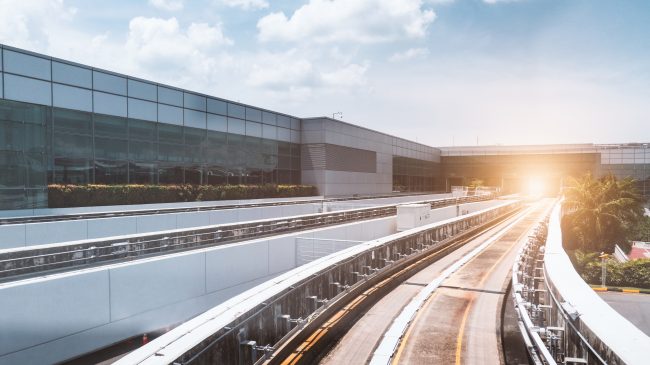Gov. Gavin Newsom’s decision to pause the most expensive portions of the state’s high-speed rail project offers an opportunity to reexamine the future of intercity passenger rail in California. Although the bullet train was poorly conceived and executed, targeted investments in passenger rail could play a role in reducing congestion and pollution. To get these benefits, however, California should set aside grandiose new projects, concentrate on large urban areas, and build upon existing infrastructure.
Train service already connects Merced, Madera, Fresno, and Bakersfield — the cities to be served by Gov. Newsom’s scaled back bullet train plan. Amtrak’s San Joacquins offers seven daily trains running between these cities. But rather than use the existing track in these areas, high-speed rail planners built a new right of way — destroying farms and businesses and forcing the relocation of a portion of Highway 99. This decision was dictated, in part, by the need for the straighter tracks required if high-speed trains are going to try to hit full 220-miles per hour speeds.
If, rather than a lavish San Diego to Sacramento high-speed rail system, state leaders had started with a more focused goal of better, faster intercity rail travel and given the flexibility to achieve this objective, the state might already be reaping rewards. So, as the California High-Speed Rail Authority considers what to do now, let’s hope they focus on a more realistic intercity train improvement program that emphasizes Southern California, where traffic congestion and emissions are greatest.
For example, San Diego’s Santa Fe Depot and Los Angeles Union Station are only 128 miles apart and are already served by passenger rail. But Amtrak’s Pacific Surfliner, which runs from San Diego to San Luis Obispo, has only 13 daily departures. The scheduled travel time from San Diego to Los Angeles is about three hours but riders frequently encounter delays and cancellations. If service was faster, more frequent, and more reliable, more travelers might be lured away from driving on clogged Interstate 405.
Major improvements are possible along this line without high-speed rail. The corridor could use additional parallel tracks to speed up trips and allow trains to pass each other. Also, grade level crossings could be replaced with overpasses and underpasses to reduce the need for trains to slow down. Grade separation projects allow faster and more frequent train service, and also improve safety and reduce disruption to communities through which trains pass. LOSSAN, the joint powers agency responsible for the Surfliner rail corridor, is working on grade separation projects in Santa Ana and Anaheim, but that will still leave dozens of grade level crossings in place.
Surfliner corridor improvements could provide far more benefits per dollar spent than high-speed rail would’ve delivered. If California shifts its focus to serving shorter distances and urban areas, it might also create opportunities for the private financing that never materialized for the statewide rail system. In Florida, a private company, Brightline, is already running trains from Miami to West Palm Beach and plans to extend service to Orlando. Between West Palm Beach and Orlando, Brightline’s maximum speed is expected to be 125 miles per hour (mph). Although this is far below the speeds — 220 mph — that bullet train supporters dreamed of here, it is faster than passenger cars are allowed to go and might offer competitive travel times over distances like San Diego to Los Angeles, especially if freeways are gridlocked. Private operators, who have incentives to improve service and control costs, could improve the LOSSAN corridor. And, ultimately, by focusing on shorter routes between largely populated cities, upgraded, privately-operated rail could deliver more benefits at a fraction of high-speed rail’s costs — even if the state considered subsidizing some of the expenses.
Gov. Newsom did Californians a huge favor by admitting the truth about the failed high-speed rail plan. Now if planners think rail should be part of our transportation future, they need to break out of the ill-conceived high-speed rail box they’ve been trapped in for a decade.
This column first appeared in the Orange County Register.

